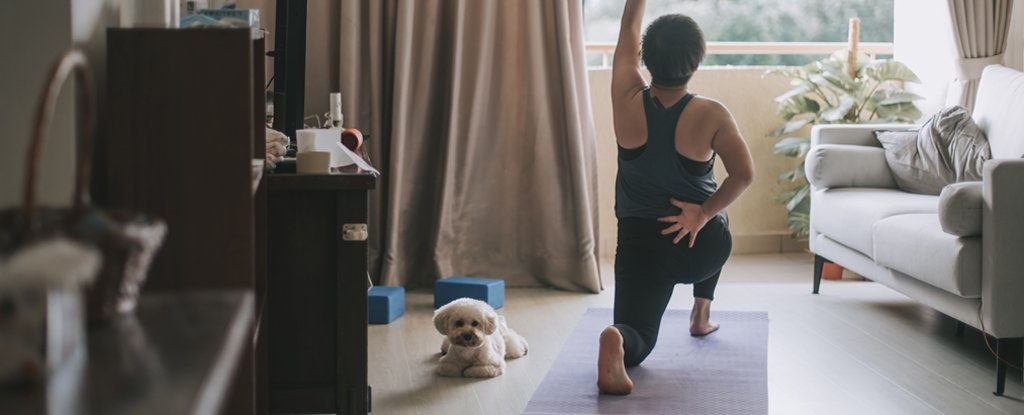
Many of us are experiencing back pain after months in lockdown. This could be due to increased stress from the pandemic, sedentary lifestyle, and a decreased ability to move around.
While you may think that you should just rest your back when it hurts, staying active can help to relieve pain and prevent you from developing back pain in the future. Because our spines were designed to move, bend, and lift, this keeps our bones and soft tissue strong and supple.
Regular exercise and movement can improve strength, endurance, flexibility, and speed up recovery from acute low back pain. Being physically active is a great way to manage low back pain.
Why exercise works
While exercise and physical activity are generally recommended for people suffering from pain, researchers continue to investigate how it works and what dosage is most effective for pain relief.
Exercise is believed to relieve pain by strengthening the muscles around the spine. These ideas have been supported by some research but they don't fully explain why exercise can help relieve back pain.
Evidence is mounting that exercise can lead to positive changes in certain functions of the nervous system, including the brain. Exercise directly affects how we feel pain by decreasing our sensitivity for potentially harmful stimuli. Exercise-induced hypoalgesia is a term that describes this phenomenon.
Research on pain-free adults has shown that a single session of intense aerobic exercise, such as running or cycling for 15 minutes, can trigger pain relief effects lasting approximately 30 minutes.
These pain-relieving properties are supported by several interrelated mechanisms, including the release of pain relief agents from the body, such as adrenaline, noradrenaline and endorphins, within the nervous system, and via the circulatory systems.
These chemical signals can not only reduce pain but also have the additional benefit of improving your mood. This is a significant benefit, as pain perception is directly affected by emotions and thoughts.
Exercise-induced hypoalgesia is also thought to involve neuroplasticity, which is the creation of new and useful connections in the nervous system.
These structural changes in our nervous system occur over a slower time frame than the chemical alterations that result from exercise-induced hypoalgesia. However, they are believed to cause a decrease of pain associated with movement over time.
Although it is still being researched on the mechanisms behind exercise-induced hypoalgesia, the good news here is that you can activate these pain-relieving effects by exercising even when you are in pain.
Get moving
Low back pain can be relieved with any type of activity or exercise. It is possible to get low back pain relief by combining physical activity (the amount of movement we do each day) with exercise of any type.
This doesn't mean that you should start lifting weights or running to relieve pain. To avoid injury, it's important that you adapt what you do to fit your abilities. You can build intensity slowly to increase your training. Doing things that you love and will continue to do so will help relieve pain and prevent it from returning.
You can also move more by doing simple things throughout the day, such as going up and down stairs several times per hour. Reduce the amount of time you spend in one position and consider getting a standing desk.
It is rare to have back pain that is caused by something more serious. It is usually caused by simple strains or sprains that will resolve in a few weeks.
Keeping active and exercising are the best things we can do. They are often recommended over having surgery or injections. It doesn't matter if the back pain persists for a while or is severe. You can manage it by increasing your physical activity and engaging in exercise.
Suzanne McDonough is Professor of Health and Rehabilitation at RCSI University of Medicine and Health Sciences. Joanne Marley is Lecturer in Musculoskeletal Therapy, Ulster University. Michael Thacker is Professor of Pain and Rehabilitation at RCSI University of Medicine and Health Sciences.
This article was republished by The Conversation under Creative Commons. You can read the original article.
